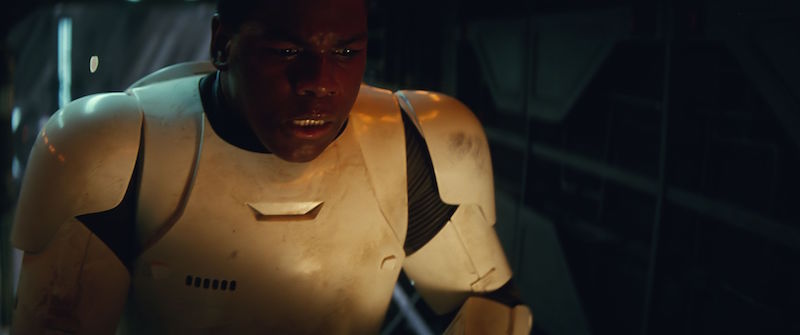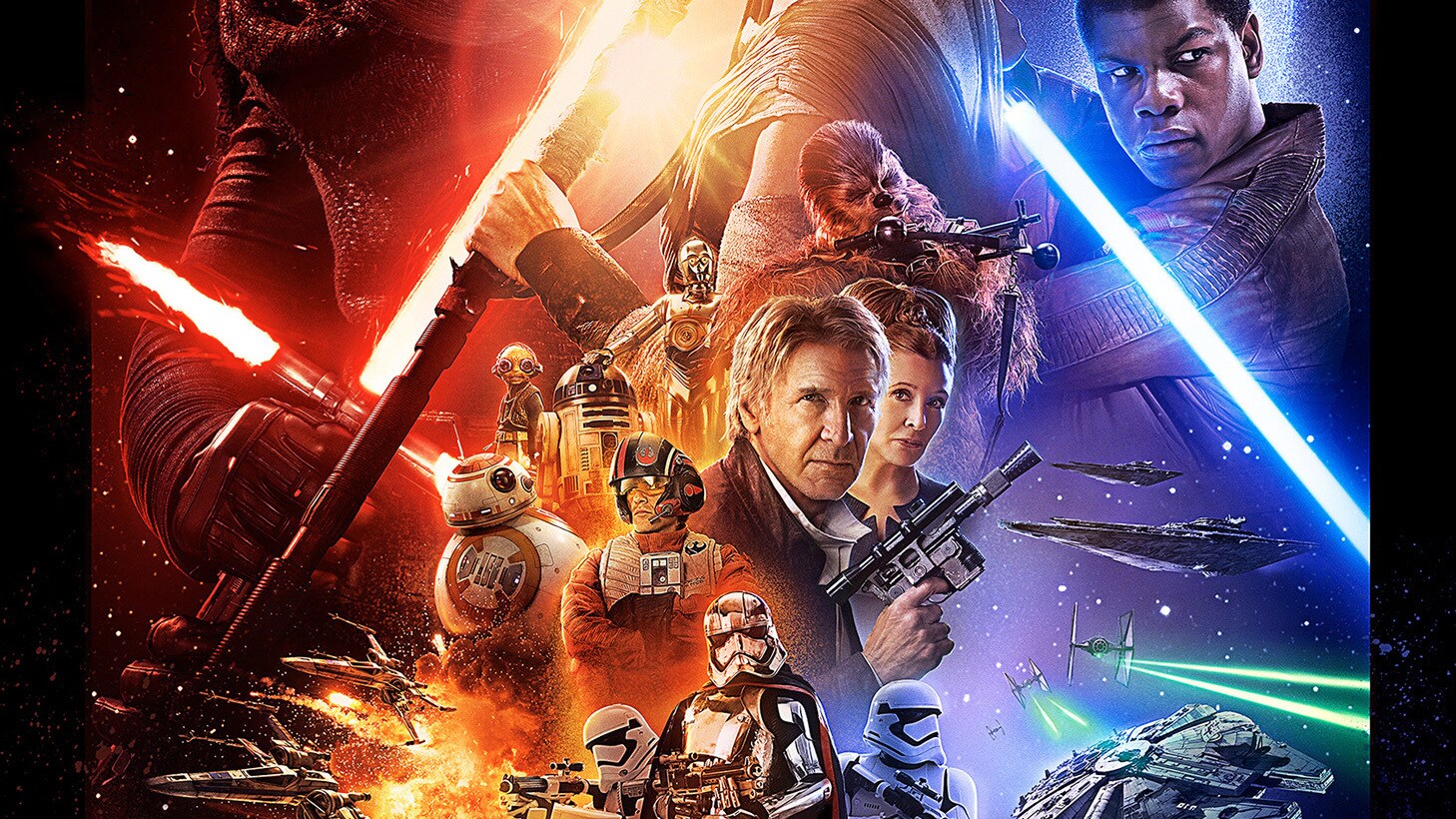Studying Skywalkers is an exclusive column that investigates the characters, themes, and lessons of Star Wars from an educational, literary perspective. In this installment, StarWars.com looks at themes present in The Force Awakens.
To almost no one’s surprise, The Force Awakens has made a significant impact on popular culture, social media, and the worldwide box office, with new and exciting characters, gorgeous imagery, and cinematic splendor. In addition, this breathtaking addition to the tapestry of Star Wars has a bountiful assortment of powerful themes that continue the storytelling tradition of our beloved saga; The Force Awakens introduces new characters, brings back old friends, and allows for us to examine Star Wars in new and exciting ways. The Force Awakens evokes myriad themes that challenge our perception, and promote additional conversation about this captivating film.
It’s Hard to Look at the Picture When You’re Inside the Frame
With his roguish charm and tenacious grit on the battlefield, Han Solo has become a cultural capstone for multiple generations. From his first appearance on the Millennium Falcon, to rathtar hunting, breaking into Starkiller Base, and finally, his confrontation with Kylo Ren, Han Solo shows himself to be capable of many things. There is great wisdom in the Corellian that is garnered from experience, as well as suffering, and Han Solo wears it as well as anyone ever has.
Despite his wealth of experience in the galaxy, however, Han is hiding from himself. He and his wife, Leia, separate after the fall of their son, Ben, and Han reverts back to his smuggling days. Not only is he estranged from his family, but he also loses the Falcon. It isn’t until he is reunited with the Corellian YT-1300 light freighter that he starts to confront the demons of his past. Change is never easy, especially after the mileage of many space battles, and Han must go back in order to move forward.
His perceived failure of what happened to Ben Solo affects his marriage, as well as his sense of self. He believes himself to be a disappointment as a father, and after a poignant conversation with General Leia, he realizes that while Luke is a Jedi, he is Ben’s father. He must make peace with his past as a parent, in order to move forward as a father, and possibly help bring Ben Solo away from the dark side, and back to his family. He is not powerless, as he once thought, and confronts his inner demons in order to face his son again. The fatal scene is at once tragic and beautiful, as he embraces his past: Han makes peace with his previously assumed failure, and shows that he is not going to run anymore. He completely surrenders to his love for his son, no matter the cost.
Friendship is the Great Common Denominator
A recurring theme in Star Wars involves the power of friendship, and The Force Awakens continues this tradition with a number of new relationships. The Force Awakens also demonstrates a well-established motif in the Star Wars films that individuals from different backgrounds and upbringing can work together, and become friends. We first encounter this when FN-2187 meets and rescues Poe from the clutches of the First Order. They have something immediate in common -- escape the Finalizer. The recently christened Finn wants to leave the First Order, and Poe wants to get back to the Resistance, so they work together for a common goal: survival. Once they reunite later on D’Qar, the crucible they have faced together, although brief, establishes a sincere bond and mutual respect. They come from completely different places, but have similar aspirations of a better tomorrow.
However, Poe is not the only character that Finn encounters. Almost immediately after his TIE crashes on Jakku, Finn meets the scavenger, Rey. At first blush, Rey sees Finn as a threat to the recently acquired BB-8, and attacks him. Once Finn frantically defends and explain himself, the two instantly find themselves on the run. They board the Millennium Falcon, and must literally work together in order to escape; the two vastly different characters must work in tandem. Rey must assume the direction and steer where they are to travel, and Finn must defend both himself and his new co-pilot.
The metaphor speaks volumes about their character arcs as well. Finn wants to leave Rey and his new companions once they arrive safely on Takodana, but Rey ultimately points the way to where Finn needs to go. He has to stay with the Resistance, and follow Rey. He will defend her, and conversely, will also help to save himself, both physically and philosophically. They still share the role they first exhibited when leaving Jakku, and are stronger as a result of working together, despite their initial motivations and differences. Rey leads the way, and Finn finds that helping Rey helps saves him from the First Order, and the specters of the past.
There are certainly many more themes in The Force Awakens that speak to us, and help us to learn more about these characters and what makes them tick. What other themes would you like to see explored in a future edition of “Studying Skywalkers”? Let us know in the comment section below!
Dan Zehr is a high school English teacher with an MS in Teaching and Learning, and runs Coffee With Kenobi (with co-host Cory Clubb), a Star Wars podcast that analyzes the saga through critical thinking, analysis, interviews, and discussion. He is also a member of the Rogues (as Blue Leader), a network of teachers that incorporate Star Wars in the Classroom.















